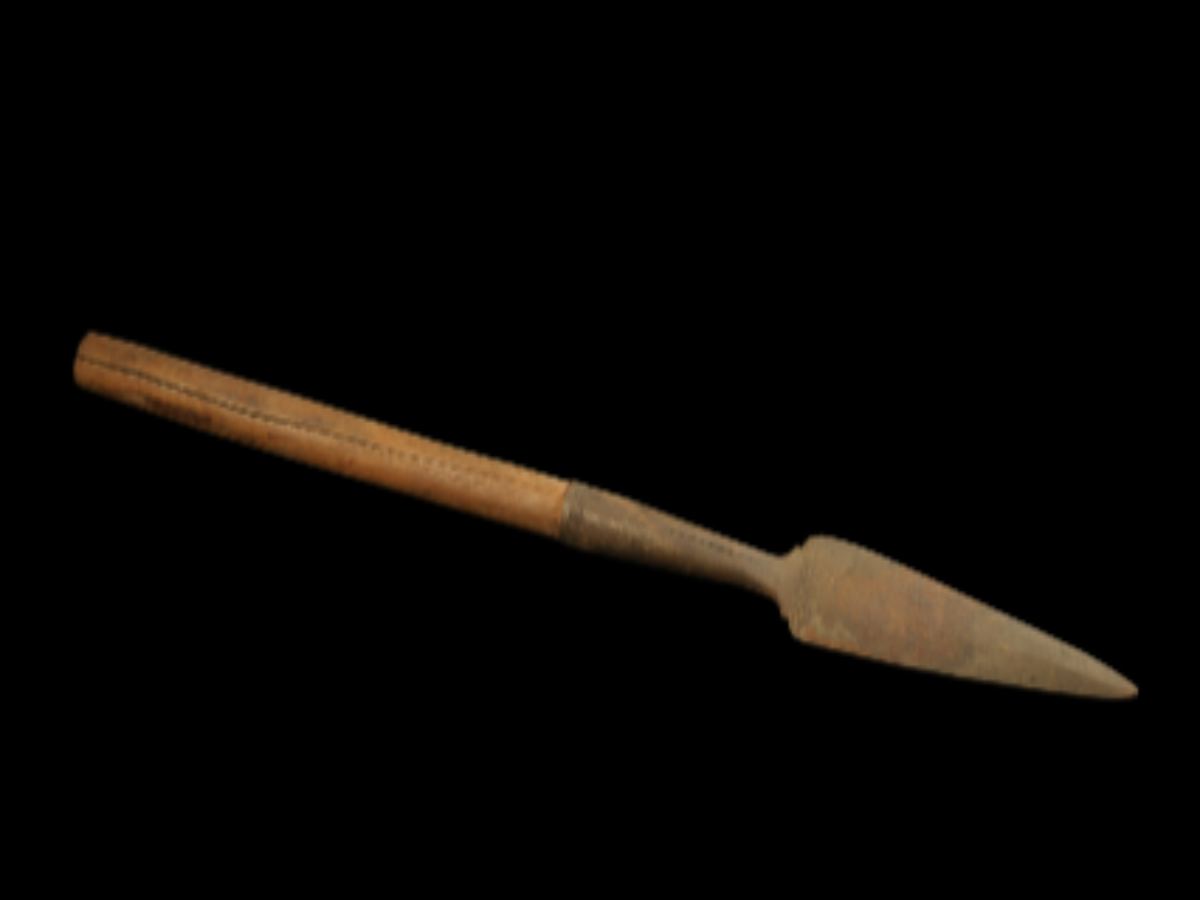State
Tribe Name
Art Type
short description
The traditional pig spear found in Kota, Rajasthan, was once a conventional weapon used with the Kota community specifically known for its craft and traditional hunting. The spear is made with a leaf-shaped pointed iron head having two sharp edges for speedy penetration at hunting. The tip of the iron head is slightly damaged and bent to indicate its previous use, probably from pig-sticking hunts which were a sport and survival practice common among tribal and royal communities of Rajasthan at colonial times . The same design engraves the tang and the lower part of the iron head as a proof of the sensibility of tribal aesthetic in metalwork. The cylindrical piece of wood used as a handle is tapped into the usually wide tang for functionality and ergonomics. In addition, the base of the handle is almost round for a sure grip. These structural elements have a value in the integration of utility and craftsmanship in the field of tribal weaponry.
Thumbnail

Filter Postion
Right
Filter Background
Off
Theme
Filter Header Image

content
Image

description
The traditional pig spear found in Kota, Rajasthan, was once a conventional weapon used with the Kota community specifically known for its craft and traditional hunting. The spear is made with a leaf-shaped pointed iron head having two sharp edges for speedy penetration at hunting. The tip of the iron head is slightly damaged and bent to indicate its previous use, probably from pig-sticking hunts which were a sport and survival practice common among tribal and royal communities of Rajasthan at colonial times . The same design engraves the tang and the lower part of the iron head as a proof of the sensibility of tribal aesthetic in metalwork. The cylindrical piece of wood used as a handle is tapped into the usually wide tang for functionality and ergonomics. In addition, the base of the handle is almost round for a sure grip. These structural elements have a value in the integration of utility and craftsmanship in the field of tribal weaponry.
The Kota tribe mainly found in southern Rajasthan has historically known that they are also interested in hunting along side agriculture. Their tools and weapons are therefore a symbol of their linkages with forests and animals they lived with. Their use was not only practical but often with socio-cultural and symbolic values being passed between generation . This pike has become the sole ethnographic object, highly microcosmic an organismic unit from which one will understand and fathom the lifestyle, survival skills, and crafts of this particular-called-the-Kota tribe, and thus, is an important part of the intangible heritage of India.
The Kota tribe mainly found in southern Rajasthan has historically known that they are also interested in hunting along side agriculture. Their tools and weapons are therefore a symbol of their linkages with forests and animals they lived with. Their use was not only practical but often with socio-cultural and symbolic values being passed between generation . This pike has become the sole ethnographic object, highly microcosmic an organismic unit from which one will understand and fathom the lifestyle, survival skills, and crafts of this particular-called-the-Kota tribe, and thus, is an important part of the intangible heritage of India.
Image Mode
landscape
promoted
On
Verified
Off
